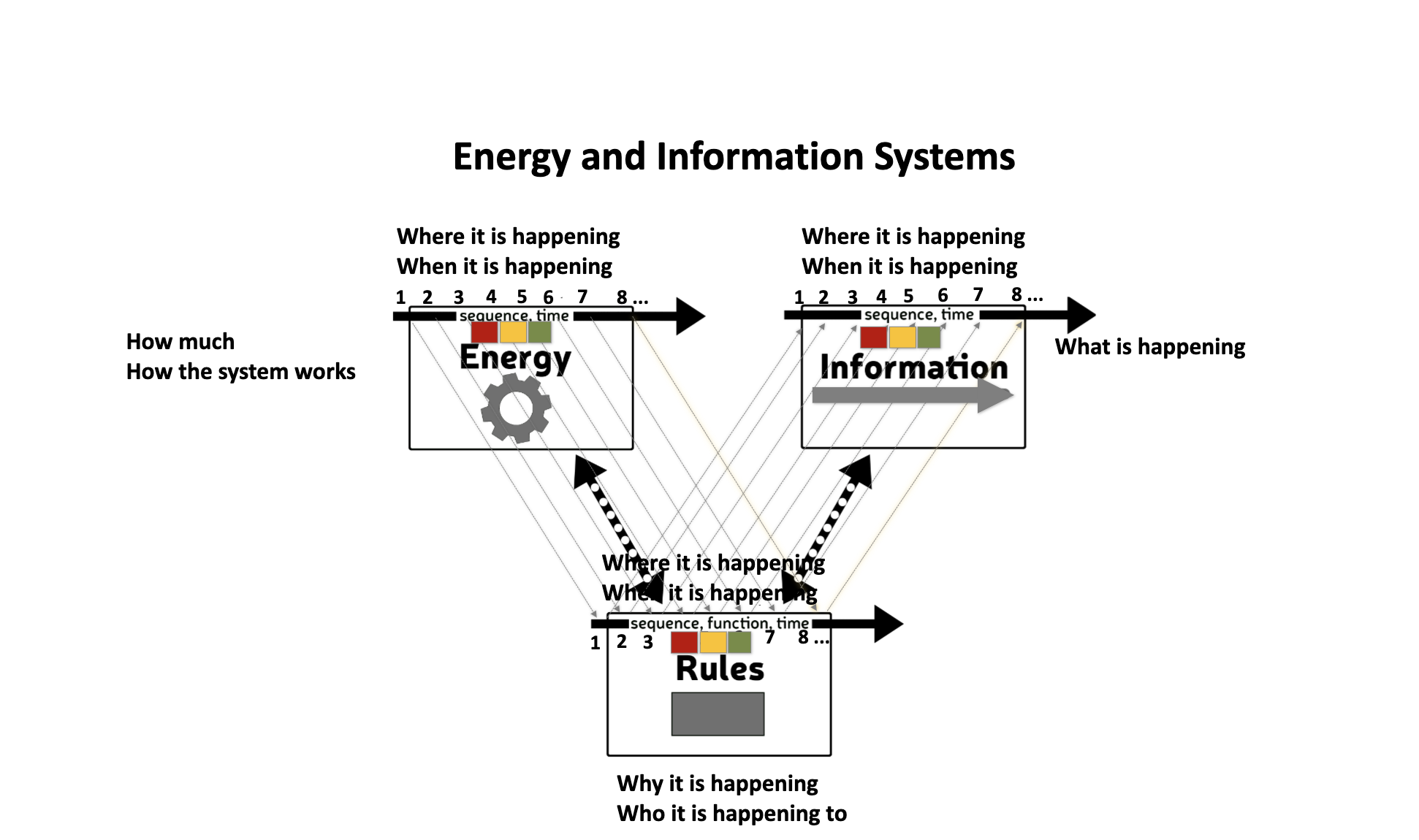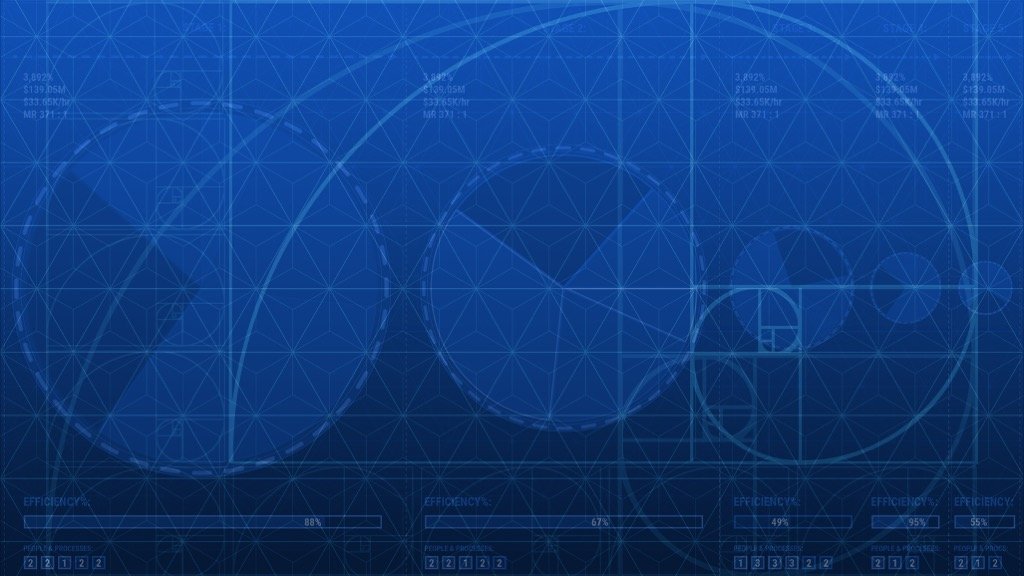

Energy is converted to information by following the rules that describe the energy transfer. For example, it costs calories for your brain to read this sentence. The calories you are using to understand these words were stored in the sun a few weeks ago. The energy is “calories”, the information is “words”, and the rules are “vision and cognition”. This process is true for all sensory information - and all systems. The calories a gasoline car uses to move were stored in the sun a few hundred million years ago. The energy is “calories”, the information is “velocity”, and the rules are “thermodynamics”. The transfer of energy to information can be visualized in scale models that spatially represent six perspectives: who/what, how many, where, when, how, and why at snapshots in time.
A marble rolling down a ramp is an energy and information system. The potential energy is the height of the ramp. This energy is converted to kinetic energy—the energy of mass in motion. The information is the sound of the marble and the increasing distance between the marble pre the previous location at snapshots in time. The rules are the curvature of the ramp, the friction between the ramp and marble, and the speed of the marble. All of these things are related, and all of these things are visible by listening to the marble and watching the marble accelerate as it moves down the ramp.
When I was twelve, I would design machines in my imagination to optimize the energy transfer. I knew that a machine with the optimal internal configuration would not spin around forever because I could hear the sound of the marbles in my imagination - based on their imagined speed and the curvature of the ramps in my mind. Since I could “hear” the marbles rolling, I knew energy was leaving the system and it would eventually stop. I built the machine in my basement because I could not model how long it would spin before it stopped-and I wanted to know.
Business systems can be visualized in a scale model in the same way a marble rolling down a ramp can be visualized in a scale model. Energy is money in motion (measured in dollars per hour). The information is the result of the processes that move the money. The rules are described by the performance of the people doing each step of the processes.
I built software called Bisualizer that applies this style of visual thinking to business systems. I use this approach to optimize energy transfer through a business. This optimization made me carbon negative for life.
